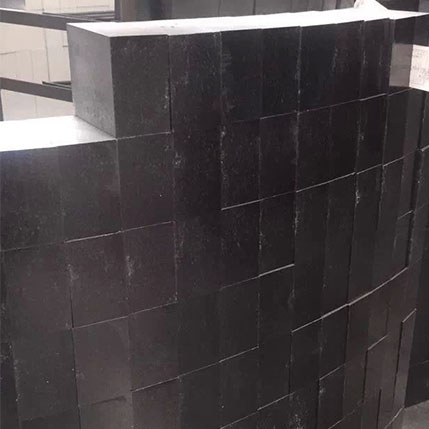Carbon-magnesia is a composite refractory material that is made by combining magnesia and carbon. It is widely used in various industries due to its unique properties. Magnesia is known for its exceptional resistance to slag erosion, while carbon boasts of high thermal conductivity and low expansion. This combination makes carbon-magnesia a versatile material with a wide range of applications.
One of the significant benefits of carbon-magnesia is its ability to address magnesia’s weakness, which is poor spalling resistance. The addition of carbon to magnesia improves its spalling resistance, making it more durable and longer-lasting. This feature is especially crucial in high-temperature applications, where materials are exposed to extreme heat and thermal shock.
Carbon-magnesia is commonly used in converters, AC/DC electric arc furnace linings, and ladle slag lines. In converters, the material is used to line the furnace walls, where it acts as a barrier between the metal and the refractory lining. The material’s resistance to slag erosion makes it ideal for use in electric arc furnace linings, where the refractory is exposed to intense heat and chemical reactions.
The methods to reduce the high-temperature erosion of magnesia-carbon bricks are as follows:
(1) High-quality materials with stable composition can be selected to improve the corrosion resistance, thermal shock resistance, and structural spalling resistance of the material:
High-purity and high-quality fused magnesia are selected because it has the advantages of large grain size, high density, low chemical activity, and high corrosion resistance. At the same time, it can resist self-destruction reaction with carbon at high temperature, thereby inhibiting the erosion of Mg0 particles by slag, secondly, increase the MgO content and reduce impurities, significantly limiting the SiO2 content and reduces the silicate phase of the magnesia-carbon brick structural components, which can reduce side reactions at high temperatures such as the reaction between SiO and graphite, and avoid carbon oxidation. Improving the crystallization degree of Mg0 can prevent the dissolution caused by the transformation of Mg0 grain boundary into the liquid phase at high temperature, prevent the further penetration of slag into magnesia-carbon bricks, and improve the purity of graphite can also increase the graphite content of magnesia-carbon bricks greater than 95%. The purity of SiO increases, other impurity components decrease, and the silicate phase contained is less. SiO will decarburize with the carbon in the alkaline slag in the carbon and magnesium to form a decarburization layer. It can also be combined with magnesium oxide, oxide Ferrous iron forms a low-melting phase to accelerate the dissolution of magnesia-carbon bricks. Finally, adding an appropriate amount of antioxidants to magnesia-carbon bricks and selecting high-quality thermosetting binders can also improve the high-temperature performance of magnesia-carbon bricks.
(1) Optimizing the composition of smelting slag
For magnesia-carbon brick refractory materials, the content of MgO in the slag should be increased as much as possible to make the MgO in the slag reach a saturated state and reduce the dissolution of MgO. Since MgO is an alkaline oxide, increasing the slag basicity can reduce the slag and magnesium oxide. The chemical reaction reduces the chemical erosion of magnesia carbon bricks. Reducing the content of FeO or other elements capable of chemical reaction in slag can reduce the oxidation reaction of slag to MgO and graphite.
(2) Take external means
A protective layer is formed on the surface of magnesia-carbon bricks by external means to prevent magnesia-carbon bricks from contact with slag and to prevent physical penetration and chemical erosion of high-temperature molten steel and slag into refractory materials, such as slag splashing to protect the furnace. Magnesia-carbon brick materials can be protected by external fields such as electric, magnetic, and ultrasonic fields. The external electric field cathodic protection method is a new technology for researching refractory materials against high-strength erosion of molten steel and slag in recent years.


